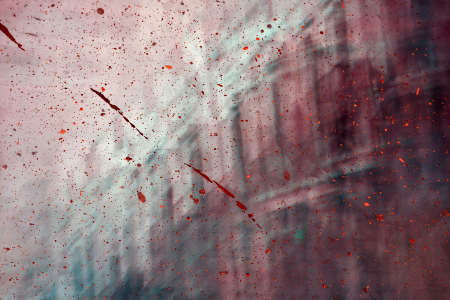We ask you, humbly: don't scroll away.
Hi readers, it seems you use Catholic Online a lot; that's great! It's a little awkward to ask, but we need your help. If you have already donated, we sincerely thank you. We're not salespeople, but we depend on donations averaging $14.76 and fewer than 1% of readers give. If you donate just $5.00, the price of your coffee, Catholic Online School could keep thriving. Thank you.Help Now >
Cambridge astronomers show why we're a lot closer to finding ET than you think
FREE Catholic Classes
Just a month ago Catholic Online predicted that astronomers would soon be able to search for signs of life around distant planets using a method by which astronomers could analyze their atmospheres. Today, astronomers at Cambridge are announcing a breakthrough which allows them to do just that.
Highlights
Catholic Online (https://www.catholic.org)
3/12/2013 (1 decade ago)
Published in Technology
Keywords: Cambridge, astronomy, planets, life, atmosphere, stars, HR 8799, exoplanets, extra terrestrial
LOS ANGELES, CA (Catholic Online) - Astronomers announced today they have developed a practical method for analyzing distant planets by studying the light reflected off their atmospheres.
In theory, one of the most telltale signs of life on a planet would be changes in its atmosphere. For example, high levels of CO2 emissions could be caused by alien activity, much as it is on Earth, although such evidence might not be conclusive, since there are natural causes for CO2 emissions as well.
Still, even if the planet under survey were uninhabited, scientists would be able to tell if it is habitable by Earthlings by studying the composition of its atmosphere.
Although the theory is sound, in practice it has proved impossible, at least until now. Previous attempts have required the use of telescopes and instruments so sensitive that the light from the parent star utterly washed out the light reflected by the planets. It's similar to the sun blotting out the stars in the daytime here on Earth.
To work around this challenge, the Cambridge team developed a method to sharpen and darken the star's light by employing some of the world's most advanced optics systems. Using a telescope that can adjust its mirrors millions of times per second to keep the direct starlight minimized. Then, imaging the area around the star for a little as an hour, enough light from the planets is gathered for analysis.
Astronomers say this can reveal planets that are as much as ten million times fainter than the parent star.
The technique was tested on star HR 8799, which is about five times brighter than the sun and emits about 1,000 times more ultraviolet light. Still, they were able to discern the atmospheres of 4 planets around the star.
None of the planets are candidates for life as they are too hot and too toxic. The four planets have atmospheres made chiefly of methane or ammonia. Scientists are uncertain of the precise levels on each, and will be doing further work to resolve the question.
The astronomical project will now continue and is expected to survey 200 stars over the next three years, all within 150 light-years of the sun.
The end result will be a comprehensive map of stars and their planets in our neighborhood. If any planets have the telltale signatures of life, or the potential for life, we can expect further, intense study to follow.
If life is ubiquitous within the galaxy, then we just may discover evidence of it within our lifetimes - and what a monumental discovery that will be.
---
'Help Give every Student and Teacher FREE resources for a world-class Moral Catholic Education'
Copyright 2021 - Distributed by Catholic Online
We ask you, humbly: don't scroll away.
Hi readers, it seems you use Catholic Online a lot; that's great! It's a little awkward to ask, but we need your help. If you have already donated, we sincerely thank you. We're not salespeople, but we depend on donations averaging $14.76 and fewer than 1% of readers give. If you donate just $5.00, the price of your coffee, Catholic Online School could keep thriving. Thank you.Help Now >








 Daily Readings for Friday, April 19, 2024
Daily Readings for Friday, April 19, 2024 St. Alphege: Saint of the Day for Friday, April 19, 2024
St. Alphege: Saint of the Day for Friday, April 19, 2024 Stewardship Prayer: Prayer of the Day for Friday, April 19, 2024
Stewardship Prayer: Prayer of the Day for Friday, April 19, 2024

